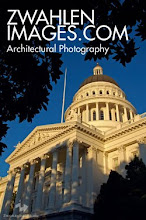As you can see by this starter line map, plans to run the Streetcars down Capitol Mall have been revised to instead go up 3rd Street and then east on H & I Streets by the proposed arena in the Railyards. I really liked the idea of Streetcars down Capitol Mall but I can only guess that it would not have created the same revenue as other more populated areas.
The estimated total project cost for the starter line is $125-135 million. This cost includes track installation, stop improvements including sidewalk improvements where needed, the conversion of Third Street to two-way operation from Capitol Mall to L Street, train signaling and power systems, streetcar vehicles, a storage/light maintenance facility, professional services (i.e., engineering design), and a project reserve. The annual operating and maintenance cost for the proposed starter line is estimated at $4 million, In 2008 the City of West Sacramento passed Measure K, which is a sales tax measure that includes revenues estimated at $1.2m per year for operation and maintenance of the Downtown/Riverfront Streetcar.
The balance of the project cost would be provided by a combination of state, regional, and local funds. It is recommended that the partnership of City of West Sacramento, RT, and YCTD to pursue a federal Small Starts 5309 grant for the starter line. The partnership would work collaboratively to pursue state and regional funds. The balance of the remaining funding needed, after any revenues generated from state or regional sources, would be provided by the two cities based on their fair share of the project costs.
It is also recommended that the City of Sacramento work in partnership with the City of West Sacramento, RT, and the Yolo County Transportation District (YCTD) to determine a fare and sponsorship strategy for the starter line. The approach to fares could involve one fixed fare (i.e., $2 is a typical one-way trip cost for other streetcar lines with a fixed fare), a distance-based fare, or a “fare free zone” in the core with fares for longer distance trips originating outside the zone (i.e., similar to the City of Portland’s fare structure).
Once the funding is in place, and environmental studies and design plans are completed, construction of the Starter Line is anticipated to take 18 months.
If this project does get funded, I vote that the city use vintage streetcars. They have a certian amount of charm that the modern streetcars don't have. Watching these old streetcars pass by is always a time-warp. They're colorful, elegant, and very functional, which is why they would be one of my favorite additions to the fabric of the city.
If this project does get funded, I vote that the city use vintage streetcars. They have a certian amount of charm that the modern streetcars don't have. Watching these old streetcars pass by is always a time-warp. They're colorful, elegant, and very functional, which is why they would be one of my favorite additions to the fabric of the city.







3 comments:
Love the idea, but wish it went out to 29th. It would be a great way to get people into and around Midtown.
I think this is a pretty cool idea too, and yes, if you are going with street cars, they should definitly be vintage.
There are some problems with using vintage streetcars--primarily ADA and bicycle access, where modern streetcars have the vintage type beat. There are other issues, like scarcity and standardization: new streetcars can use standard parts, vintage equipment is hard to find and they quite literally don't make them like they used to, so just about any replacement part has to be manufactured especially for the car. While new cars cost more to buy at the outset than restoring legacy cars, maintenance is simpler.
There are other advantages too: low-floor designs means not just wheelchairs are easier to roll on, but also bikes. And then there's air conditioning. Riding in an open "California car" has a certain charm, but most folks like real A/C in our summers.
San Francisco's legacy fleet, with a few exceptions, is based on a small number of standardized designs: the PCC cars and the Milan trams (actually built in Ohio) make up the bulk of the fleet, with a few special cars like the English "boat car" and the original MUNI vintage cars. But finding a large supply of somewhat standard legacy cars is very rare (they're all antiques, after all.)
That being said, Sacramento could very easily have a "legacy fleet" by using several cars currently in storage:
http://sacramentohistory.blogspot.com/2009/11/sacramentos-historic-streetcars-moved.html
By restoring these Sacramento cars, and using a limited number of historic cars for special occasions and weekends, we could have the technical advantages of modern cars but still have the character of historic cars available on demand. I'm sure they would go over well with tourists, too--and maybe encourage those tourists to explore Sacramento farther than just Old Sac!
Post a Comment